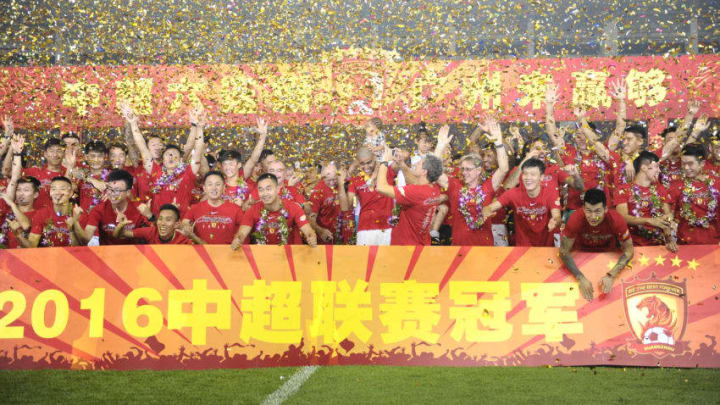The exodus of big name players from Europe and South America to the Chinese Super League has shifted the transfer window paradigm. What are the long term prospects of the CSL?
“I’d like to take you on a slow boat to China…
get you and keep you in my arms evermore,
Leave all your lovers weeping on the far away shore” (Frank Loesser, 1948)
Although the transfers of Carlos Tevez, Axel Witsel, Oscar, et al, lured east by stacks of cash, were probably not what the songwriter had in mind, the lyrics are somewhat fitting of the sentiments around the exodus of talent to the Chinese Super League.
If history teaches us anything it’s that these types of moves hardly translate into anything other than fat bank accounts for the players. We’ve seen this type of trend before, although not on the same grand scale, in the form of the Republic of Dagestan’s Anzhi Makhachkala a few years back. Samuel Eto’o, Willian and Roberto Carlos couldn’t resist the advances of owner Suleyman Kerimov. Fast forward three years and we find the Dagestan club completely off the map of European soccer, devoid of any notable names, stuck somewhere between relegation zone and mid-table mediocrity in the Russian League.
Oil and gas billionaires hell bent on having the shiniest toy on the block have been throwing piles of cash around for decades. The narrative follows a clear script: initial mild intrigue caused by headline-grabbing signings, some level of public interest driven by headline-grabbing signings and a measure of success at the local level, a plateauing of said interest level, and finally the loss of interest and dispersion of talent as the cash runs out or the billionaire moves on to the next shiny new thing.
Rome was not built in a day and the credibility of the CSL won’t be either. However, given the league’s current approach to player transfers, the prospects of the Chinese Super League are not very encouraging. A healthier, tried and true approach to team-building is a gradual addition of talent.
Allow the league time for organic growth, sprinkle in some worker bee-type players who can do something other than score goals. Any team or project worth its weight is built on a strong foundation. Where are the Sergio Ramos and Neuer rumors? At the time of this writing, there are no notable defenders or goalkeepers boarding flights to China.
Luring the likes of Carlos Tevez and Graziano Pelle before solidifying the foundation of the team is the soccer equivalent of putting lipstick on a pig. Making attempts to lure Alexis Sanchez and Diego Costa away from more prestigious clubs is the Kardashian approach to franchise-building, the equivalent of buying a Lamborghini when you’re still living with your parents.
The initial investment of CSL teams may be understandable from a general business perspective, but it seems unlikely to be justified by future returns. This is the issue that may spell the end of the exodus. TV money, by far the largest chunk of the CSL revenue pie, accounts for approximately $250 million a year over the next five years. It’s unclear how much of the $250 million gets distributed to the clubs. Even if the entire amount is paid out to the 16 clubs equally, a $15 million TV purse is hardly a winning proposition when clubs are spending more than twice that in transfer fees.
Even considering the Chinese government’s stated ambition to grow the domestic game, which is certainly an important factor in the current spending spree, the time it will it take for owners to see any return on investment is likely to be prohibitive, especially with so little thought being given to on-pitch considerations. Big-name players have never been enough for a league to thrive.
Clearly the owners have made the decision (whether wise or not) to throw piles of cash around as they look to build their product. In the process, they’ve also started a pissing contest with each other, loathing the prospect that a rival owner may drive a shinier car than their own off the lot. The arms race among owners is in full swing while the revenues are hardly justifiable.
Under the current business construct and framework, this will not end well for the league and the owners. Obviously, they haven’t learned any lessons from the Anzhi experiment. Whatever happens with the CSL, the owners will surely get on with the next shiny toy.
Next: 25 best club soccer teams of all time
In fact, the only ones standing to gain significant riches here are the players. The slow boat ride to China may compromise their relevancy on soccer’s global stage, but their financial well-being should be ensured for generations to come.
